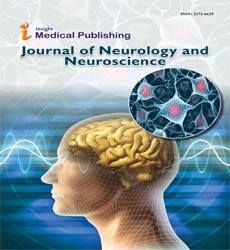Abstract
Methodology and Feasibility of Neurofeedback to Improve Visual Attention to Letters in Mild Alzheimerâ??s Disease
Background: Traumatic brain injury (TBI) is a leading cause of morbidity and mortality globally. Currently, the association between hyperoxia and outcomes in patients with TBI remains debatable. We assessed the effect of hyperoxia on the neurological outcomes and survival of critically ill patients with moderate-severe TBI.
Methods: This was a retrospective cohort study of all adults with moderatesevere TBI admitted to the ICU between 1st January 2016 and 31st December 2019 who required invasive mechanical ventilation. We noted ABGs performed with the first 3 hours of intubation, then 6-12 hours and 24-48 hours. The patients were divided into two categories: normoxia (PaO2 60-99 mmHg) and hyeroxia (PaO2 >100 mmHg). Multivariable logistic regression was performed to assess predictors of hospital mortality and good neurologic outcome (Glasgow outcome score [GOS] ≥ 4). In a second analysis the patients were divided into survivors and non-survivors.
Results: The study included 308 patients: 23.4% (n=72) in normoxia group and 76.6% (n=236) in hyeroxia group. Hyperoxia was not associated with increased hospital (43% vs. 18%, p=0.20) mortality. Further, the hospital discharge GCS (10 ± 5 vs. 11 ± 4, p=0.10) and GOS (3 ± 1 vs. 3 ± 1, p=0.35) were similar. In multivariable logistic regression analysis, hyperoxia was not associated with increased mortality (adjusted odds ratio [aOR] 0.99, 95% CI 0.99-1.00, p=0.11). PaO2 within different ranges was also not associated with mortality: 100-200 mmHg: aOR 0.60, 95% CI 0.29-1.52; 201-300 mmHg: aOR 0.66, 95% CI 0.29-1.52; 301-400 mmHg: aOR 0.80, 95% CI 0.31-2.09; and >400 mmHg: aOR 0.39, 95% CI 0.14-1.08; reference: PaO2 60-99 mmHg. The Kaplan-Meier survival curve for normoxia verses hyperoxia showed no significant difference for all-cause mortality. In the survivors verse nonsurvivors analysis, the PaO2 were (median, IQT) 199 mmHg (111-329) and 165 mmHg (84-252), respectively.
Conclusion: Hyperoxia (PaO2 >100 mmHg) was not associated with increased mortality or poor neurological outcomes (determined by GOS) in moderatesevere TBI patients.
Author(s):
Deirdre E. McLaughlin, Daniel Klee, Tab Memmott, Betts Peters, Jack Wiedrick, Melanie Fried-Oken, Barry Oken and The Consortium for Accessible Multimodal BrainBody Interfaces (CAMBI)
Abstract | Full-Text | PDF
Share this

Abstracted/Indexed in
- Google Scholar
- Open J Gate
- Genamics JournalSeek
- The Global Impact Factor (GIF)
- China National Knowledge Infrastructure (CNKI)
- Directory of Research Journal Indexing (DRJI)
- WorldCat
- Proquest Summons
- Scientific Journal Impact Factor
- Secret Search Engine Labs
- Euro Pub
Open Access Journals
- Aquaculture & Veterinary Science
- Chemistry & Chemical Sciences
- Clinical Sciences
- Engineering
- General Science
- Genetics & Molecular Biology
- Health Care & Nursing
- Immunology & Microbiology
- Materials Science
- Mathematics & Physics
- Medical Sciences
- Neurology & Psychiatry
- Oncology & Cancer Science
- Pharmaceutical Sciences

